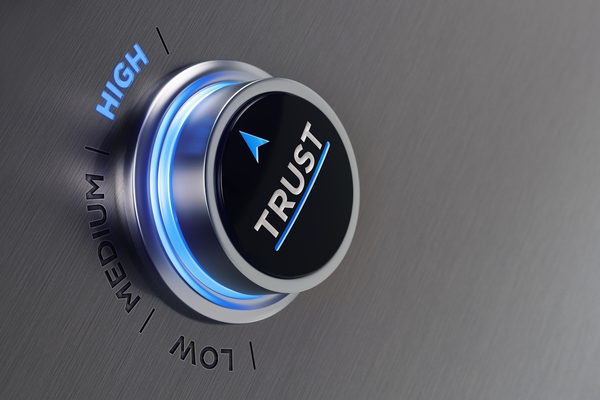Building competitive advantage with downtime prevention

Oliver Schwarz at GTT asks whether downtime prevention is the competitive edge you’ve yet to sharpen
Businesses are living, breathing structures. A digital infrastructure, made up of intricate networks and technologies symbiotically working together.
If one piece in this IT puzzle fails or is compromised, it can cause the entire system to falter and, in the worst-case scenario, collapse. This causes compromised performance or downtime. In these instances, IT teams are fighting against the clock to reboot the organisation, prevent loss of revenue, and reputational damage.
There are tangible consequences with every second equating to a precise loss in potential profit. UK and global companies are not immune to downtime. Research from Splunk estimates that on average, organisations are missing out on almost $50M in revenue. It is obvious that IT leaders who successfully focus on improving business resilience and avoiding downtime can realise business benefits and sharpen their competitive advantage simply by being more available than competitors.
So, what lies behind so many businesses still facing challenges in this area of running their everyday operations?
The challenge of complexity
When it comes to downtime, specific causes can be quite convoluted, with many aspects to consider. Businesses change in ways you don’t expect. Often, premises and digital infrastructure are designed with certain outcomes in mind, only for a new technology or business priority to cause change. When this happens, the once purpose-built architecture is now not optimised for its current role.
This can run the risk of glitches, such as code bugs, faulty software updates, or technology integration failures, and result in downtime. A lack of training or available skills can further exacerbate an incident through failure to follow protocols or by inadequate troubleshooting once systems are down.
More urgently still, an increasingly common cause of downtime incidents is cyber-attacks. According to a Databarracks survey, nearly a quarter of businesses (24%) suffered downtime as a result of a cyber-incident last year.
One of the biggest cyber-security concerns when it comes to business continuity, however, are DDoS attacks. Corero’s DDoS Threat Intelligence Report showed that DDoS attacks are causing huge problems for organisations, with a 300% increase in carpet bomb attacks. This goes to show the severity of the issue and marks yet another consideration on every IT team’s long list of worries.
The mix of malicious and non-malicious causes for technical failure and downtime is a degree of complexity that cannot be successfully dealt with tactically, as each issue occurs. It requires comprehensive yet flexible strategies that are continuing to evolve and are consistently applied.
Top downtime prevention strategies
The first step in preventing downtime is assessing the network architecture. After all, you can’t defend what you can’t see. Mapping out your entire network, identifying tools and operations which are critical in delivering products/services, and those areas which are at a higher risk of attack or compromise lays the foundation for an effective downtime prevention strategy.
Once the network has been mapped, and core competencies have been recognised, ensuring that redundancy measures are in place lets business decision makers and IT teams sleep easier. Increasing redundancy for both hardware and traffic pathways mean that no single point of failure will completely shut down the organisation, and if one area fails, data still has alternate routes to flow through.
Sites cannot be too overprovisioned when it comes to downtime prevention, but budgets typically limit the art of the possible. Look for solutions and partnerships that offer what you need today, but also offer the ability to make soft changes when needs shift. Expecting the unexpected, and anticipating change both within the organisation, or the larger macroeconomic landscape, is a given now.
The ability to make soft changes means that when there are shocks to the system, IT teams don’t have to rip and replace but can quickly enhance and solve without investing heavily in new in-house solutions.
What should never be missing from this network assessment is the maintenance of a good security posture. As addressed previously, DDoS attacks are only getting more common and are coming from more vectors than ever. DDoS mitigation technologies, such as the use of data scrubbing centres and traffic filtering, ensures any inbound traffic is analysed and cleansed of any malicious packages before it reaches the users’ network.
Your DDoS prevention strategy should consider the approach your organisation takes to attack detection. Either taking the responsibility of detection in-house and reacting to incidents after-the-fact or having an always-on DDoS solution. Robust DDoS solutions don’t just mitigate attacks, but do so automatically, ideally in real-time, to prevent any possible down time and maintain business continuity when targeted.
Partnering for successful downtime prevention
Once the network has been assessed, measures implemented, and teams onboarded or briefed on their priorities – then what?
All the ingredients for downtime prevention must come together in the right mix and be focused on the right areas to cater for your business’ specific needs.
Auditing and creating these systems in-house means that the frameworks are understood fully by internal IT teams so, should downtime occur, the incident response teams can quickly identify the root cause and begin to address the problem.
However, the process of establishing these frameworks can be drawn out and arduous, which inevitably takes time away from business growth opportunities like R&D, service improvements or identifying efficiencies. Working with a partner can alleviate this stress and create room for growth in a secure environment.
Leaning on the expertise of dedicated professionals who have constructed these competencies and frameworks before and can audit a business with a fresh pair of eyes, is invaluable when it comes to security. It’s easy for internal teams to make assumptions and have tunnel vision when it comes to their vulnerabilities and strengths. Moreover, monitoring for cyber-attacks is a 24x7x365 task. This always-on state of constant vigilance can be a huge drain for IT security teams.
By collaborating with seasoned managed service security providers (MSSPs), organisations can benefit from having "more eyes" monitoring their network architecture and corporate IT. MSSPs are able to instantly monitor and address any issues, freeing up internal IT staff to concentrate on making the best choices possible to maintain business continuity.
Now, once a strategy has been established, this doesn’t mark the end. As a business’ needs and environment changes, so should the downtime prevention strategy. A continual approach to amending strategy is required if it is to remain effective in the face of an often-volatile business landscape.
Downtime prevention is a competitive advantage
Preventing downtime is crucial in the current environment. It’s never been more critical to raise general understanding of the urgency and steps needed to ensure business continuity. Demonstrating the financial importance of downtime prevention, by equating it with the loss of future income, is often the best way to secure leadership commitment.
It’s up to an individual business how they develop their business continuity and disaster recovery plans and whether they choose to focus their efforts in-house or rely on experienced partners. However, the important thing is that preventing downtime remains a focus.
With the right blend of modern technologies and strategy, businesses can help to prevent downtime and ensure continuity no matter what is around the corner.
Oliver Schwarz is VP Engineering & Architecture at GTT
Main image courtesy of iStockPhoto.com and Charday Penn

Business Reporter Team
Most Viewed
Winston House, 3rd Floor, Units 306-309, 2-4 Dollis Park, London, N3 1HF
23-29 Hendon Lane, London, N3 1RT
020 8349 4363
© 2024, Lyonsdown Limited. Business Reporter® is a registered trademark of Lyonsdown Ltd. VAT registration number: 830519543





